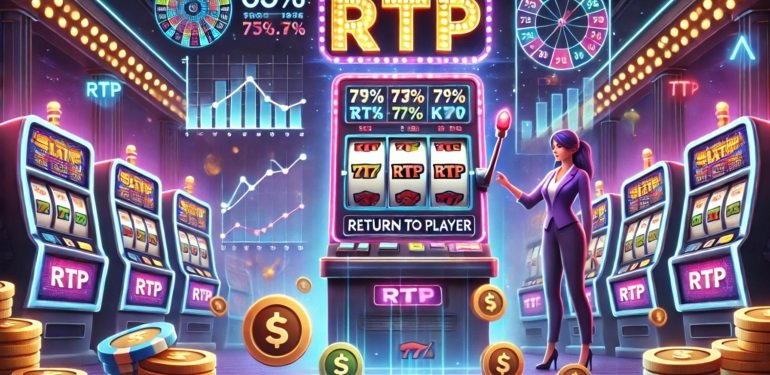Introduction
The idea of Return to Player, or RTP for short, is one of the most talked-about topics in the rapidly changing world of online entertainment. RTP is the theoretical percentage of all money wagered on a game that is eventually returned to players, for those who are not familiar with the concept. It’s an important indicator that lets fans know how much they might get out of their play sessions. However, with so many alternatives accessible across multiple platforms, finding raja138 games with high RTPs might be difficult. Demo mode is a useful option that many people ignore. Users can gain important insights from this free-play version of games, not only for practice but also for selecting games with advantageous RTP features. In this article, we’ll examine the constraints and best practices of using demo mode strategically to assist users in locating high-RPP games.
Comparing The Experience Of Demo Mode In Various Games
Comparing the performance of many games under identical play conditions is one of the most calculated methods to use demo mode to find high-RPP titles. Users can determine which games provide higher returns or more sustainable play by assigning equal demo credits and playing for the same amount of time or spins. During demo sessions, keeping informal notes on feature triggers, win frequency, and balance swings might help identify which games may eventually yield greater rewards.
This approach permits a player-driven examination, particularly in situations when RTP information isn’t easily accessible or apparent, but it doesn’t take the place of official RTP values released by game creators. When switching to real-play modes, users can make better decisions if they record and contrast these experiences.
The Drawbacks Of RTP Discovery In Demo Mode
Notwithstanding the benefits, there are drawbacks to identifying high-RPP games in demo mode. The main problem is that the simulation used in demo mode might not always accurately represent the setups of real-money versions. Certain systems may omit random number generator (RNG) variations that are active in live versions or utilize different RTP settings for demo play. Despite being uncommon, this disparity may distort a user’s expectations.
Furthermore, the psychological strain of real-money risk, which can affect how consumers perceive volatility and loss, is absent from demo play. Players could neglect elements of gaming that are more noticeable during real sessions, such managing their bankroll or reacting emotionally to near-misses and dry spells, if there are no real stakes involved. Consequently, even though demo mode is a helpful tool, it should be used in combination with other research techniques including reading expert evaluations and verifying developer RTP disclosures.
The Function Of User Reviews And Community Input
Peer reviews and online forums can be an extra resource in a world when there are thousands of gaming possibilities. A lot of players post their demo mode discoveries on blogs, forums, and videos. Users can identify high-performing games and validate trends by comparing their own demo experiences with those of others. Some communities even test games on several websites to make sure the demo version’s performance is representative of the real version.
Detailed observations like the average session duration, the amount of bonus triggers per hundred spins, and the percentage of return during demo tests are frequently included in these shared insights. Users have a better basis for seeing high-RTP prospects when they relate this feedback to their demo experiences.
Monitoring RTP Using Official Records
Demo mode can provide helpful hints, but nothing can take the place of official RTP documentation from licensed platforms or game developers. Not all systems, though, make this information easily visible. Players can sift through a list of games that seem promising by using demo mode as a scouting tool. They can then look for official RTP statistics to validate their suspicions. This combination approach is more effective than choosing games at random based only on popularity or aesthetics.
Some jurisdictions have laws requiring game developers to reveal RTP numbers, particularly if the game is overseen by a reputable gaming regulator. After testing out a game’s features in demo mode, players can check with authoritative sources to see if it satisfies their requirements for RTP and transparency.
Conclusion
Demo mode is a useful tool for gamers looking to find high-RPP games and optimize their enjoyment value; it’s more than just a free trial. Before spending real money, consumers can make better judgments by closely examining payment frequency, volatility, bonus round accessibility, and comparative analysis across other titles. Demo mode contains behavioral clues that, when properly evaluated, serve as indicators of a game’s potential payout even though it doesn’t explicitly provide RTP percentages.
Demo mode, however, ought to be a component of a comprehensive approach. Finding games with good return rates can be done more comprehensively by combining demo experience with community reviews, official RTP documentation, and developer research. Ultimately, by selecting alternatives that fit their objectives, tastes, and risk tolerance, users who make good use of demo mode not only improve their game selection process but also improve their overall experience. No gamer should overlook demo mode in a world where information can greatly enhance results.


